Canon introduced two 110 cameras in 1975, the 110E, which had an f/2.7 zone focusing lens, and the Canon 110ED, which sported a 26mm f/2.0 lens (one of the fastest on a 110 camera), speeds from 8 seconds to 1/500, a rangefinder, proper hot shoe and a system for imprinting dates on the negative surface.
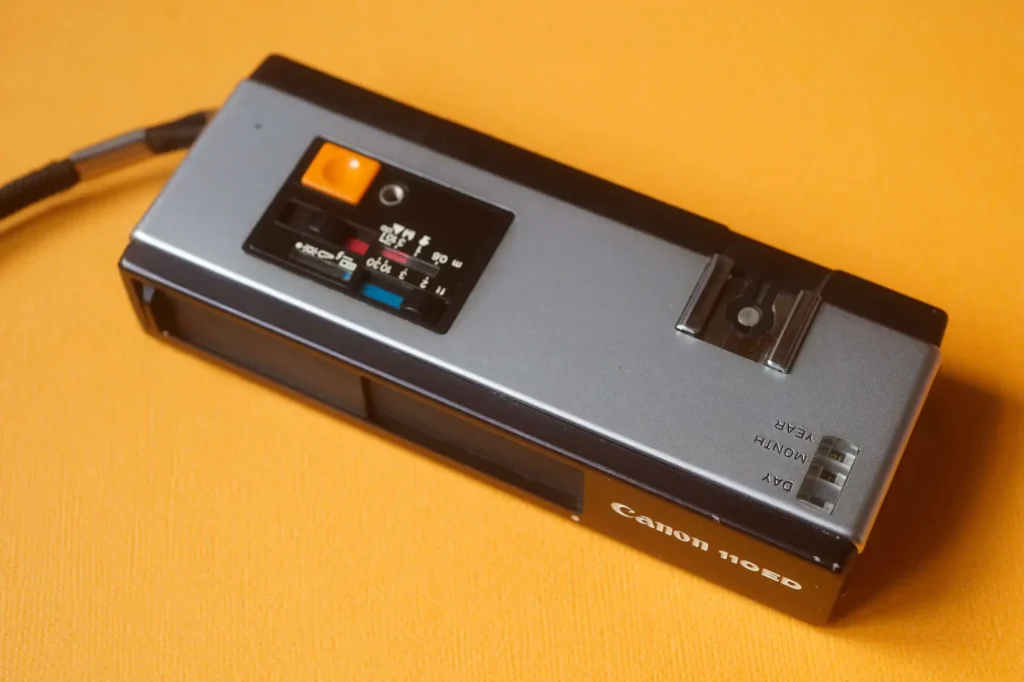
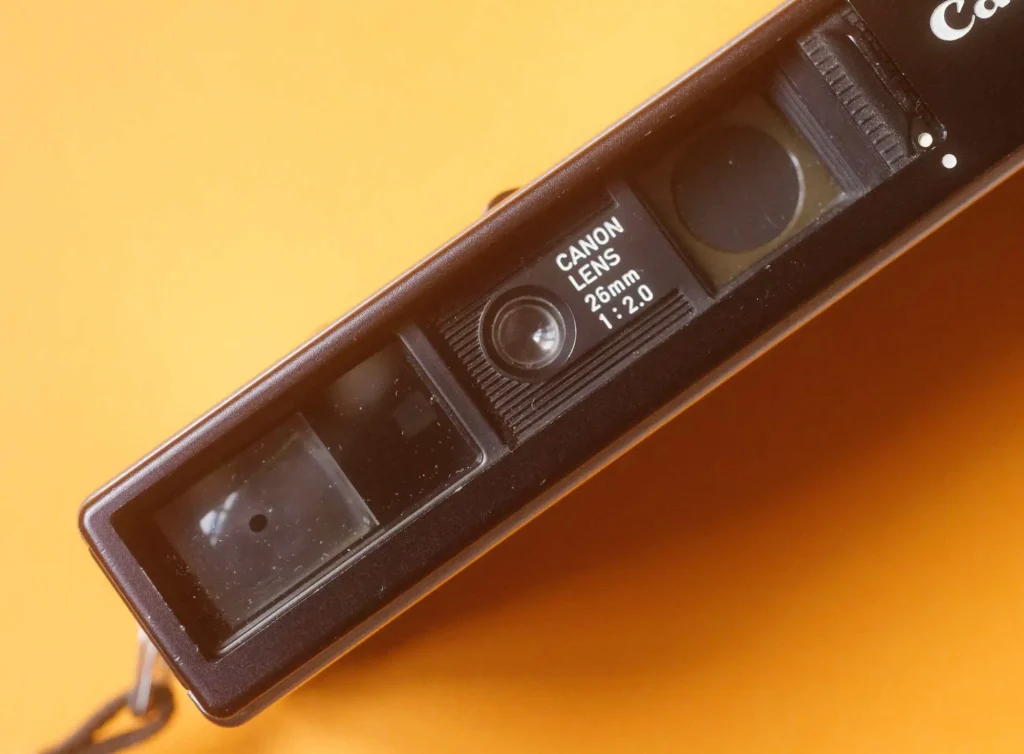
The 110 ED is quite a luxurious camera, with a decent amount of heft, a brushed aluminium body, a painted metal black front panel with a sliding lens-and-viewinder cover and a plastic rear panel and door. About the only aspect that gives any worries about robustness is the plastic ‘living hinge’ used for the rear door (unlikely to be used often enough the wear out).
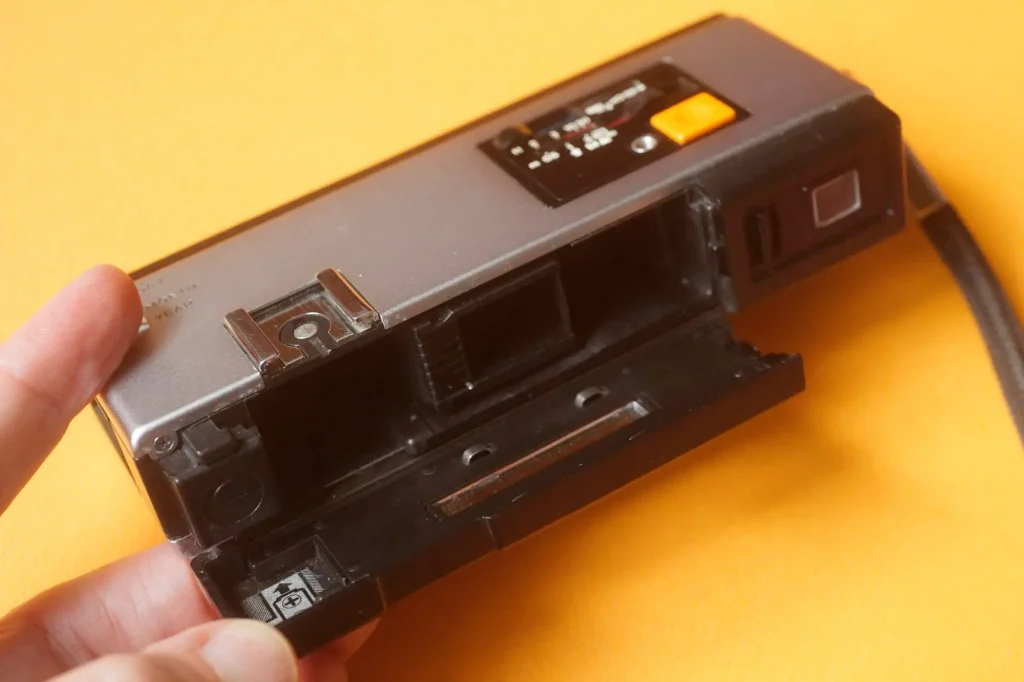
The camera is powered from a commonly available 6v battery that fits in at the left of the film chamber and can only be accessed when the rear door is opened.
This particular model has no sensor to detect 400ASA (ISO) film – that came a few years later with the updated 110 ED 20 model, which also added a 1/1000 second shutter speed.
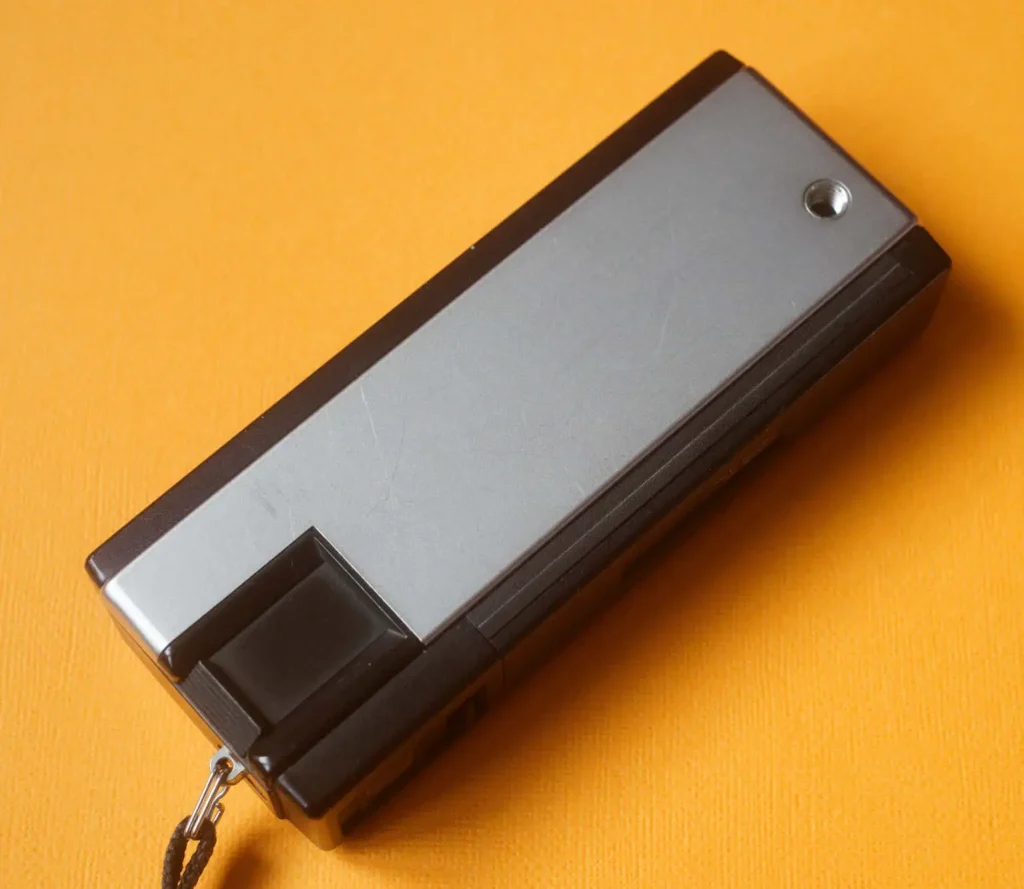
Although it allows you to use apertures between f/2.0 and f/16, actual aperture values are not shown on the camera, instead the Canon 110ED uses pictograms for various lighting conditions. A window ikon indicates indoors and selects f/2.0, while the cloud and sun symbols select smaller apertures.
The date function is slightly limited these days, as the years stop at 86 (so even my eldest’s baby pictures would have been out of range), however it does allow you to set a single number from 0-9 for the year as well. It seems odd these days that the date is manually set via thumb-wheels, as we are so used to electronic calendars and clocks that would set these values automatically; I guess most modern users will simply turn this feature off.
Film advance is via a sprung slider on the base of the camera at the right end. Focusing and aperture/situation selection are via little sliders on top of the camera, just in front of the well placed and comfortable shutter release. The Canon 110ED has a threaded cable release socket next to the shutter release and a tripod bush on the opposite side of the base to the film advance.
The door covering the front of the Canon 110ED is made of two halves that slide as one, with one half sitting behind the other when the camera is open. The shutter is locked until the cover is completely clear of the lens. The rangefinder is quite a short base, but seems perfectly adequate for the focal length of the lens. The viewfinder gives very little information, with just some bright-frame and parallax lines in addition to the rangefinder patch.
Practicalities and comparisons
Those of us who shoot cameras from the 70s and earlier are used to having to find kludges for batteries and such, but 110 cartridge cameras have a major disadvantage – the availability of film. As discussed in my recent article about shooting 110 film in 2021, Lomography make black and white 110 film, but home processing adds the problems of availability of processing reels for 16mm – and this counts against 110 cameras as practical devices, but doubtless if if wasn’t for high end 110 camera models like the Canon 110 ED, there would probably be no new film available at all. It could be worse, it could be APS.
Over the years it is not uncommon for a rangefinder camera to drop out of vertical alignment, leaving you with one image slightly above the other in the rangefinder patch at proper focus, and this was the case with the Canon 110ED I was using. After I’d run a film through, I found there was an adjustment screw visible in the film chamber, which allows the rangefinder to be adjusted.
Although the adjustable aperture on the Canon 110ED is a simple diamond, it does not have much in the way of adverse effect on out of focus areas.
Canon 110ED Photos
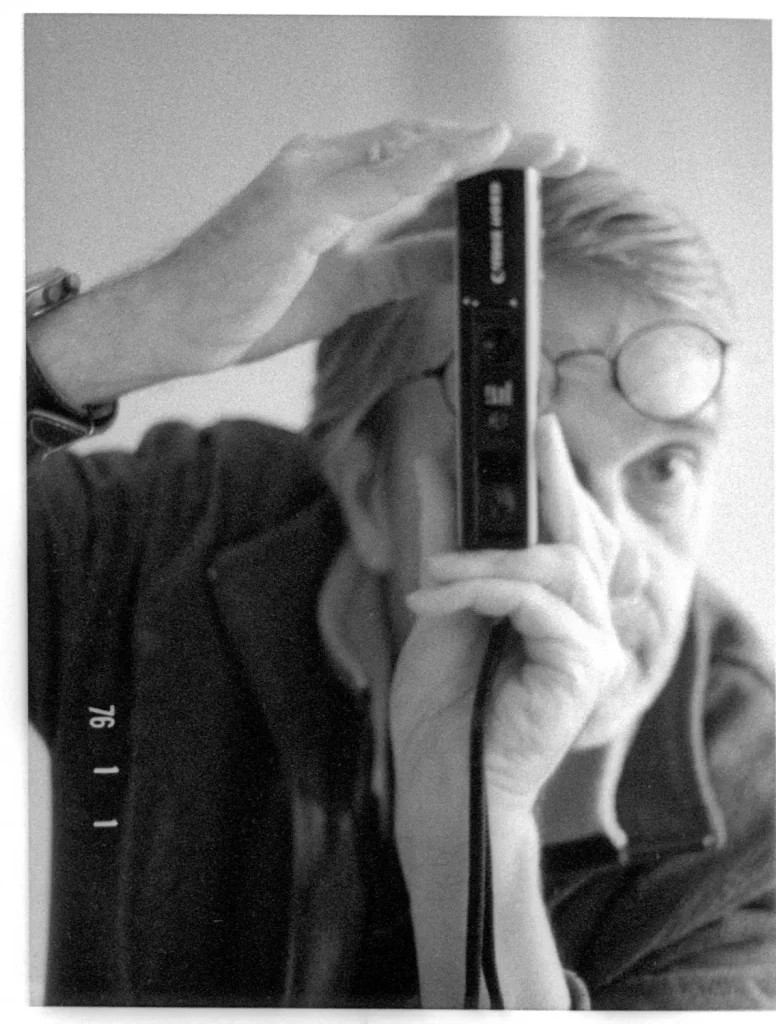
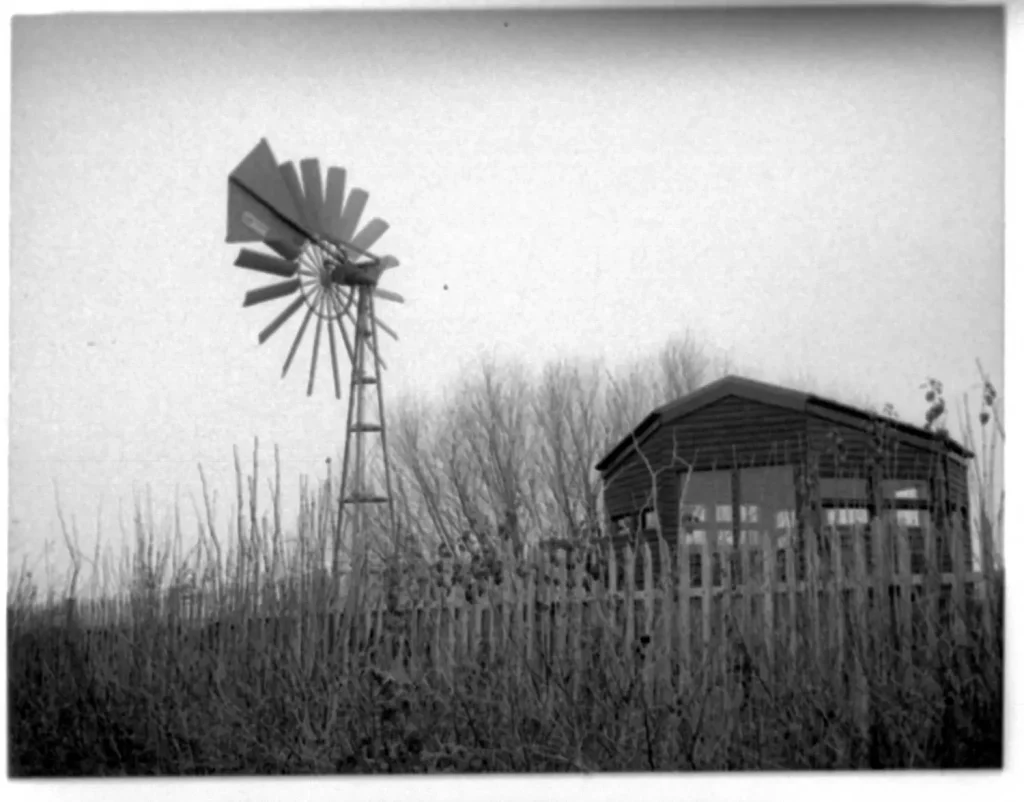
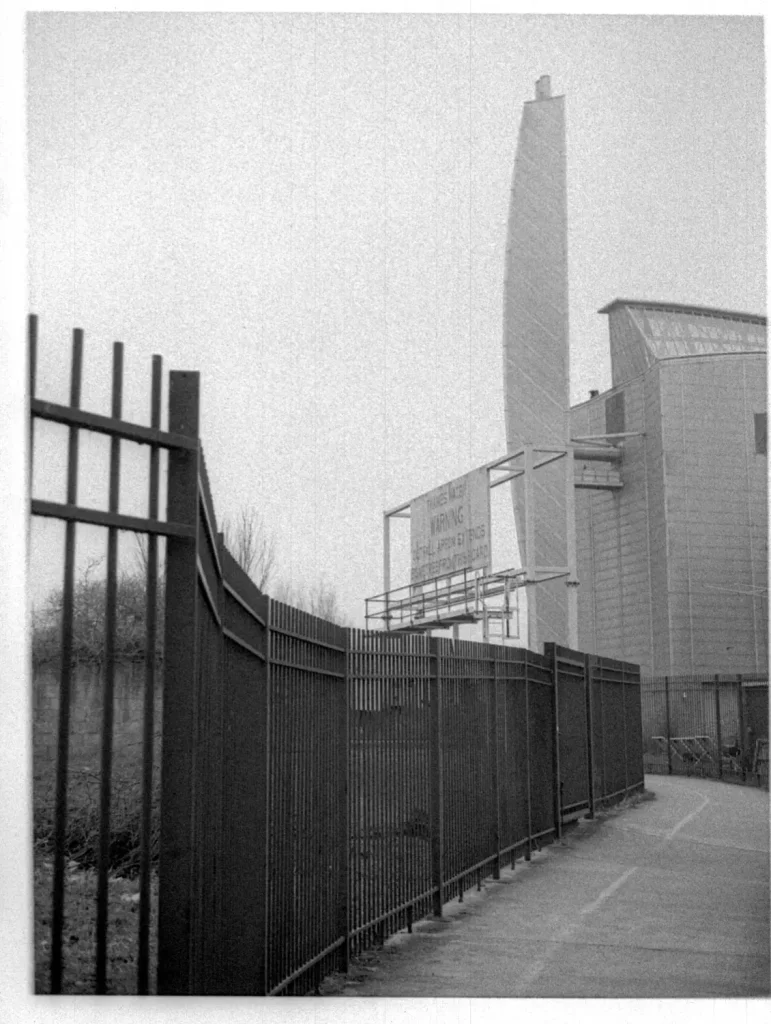
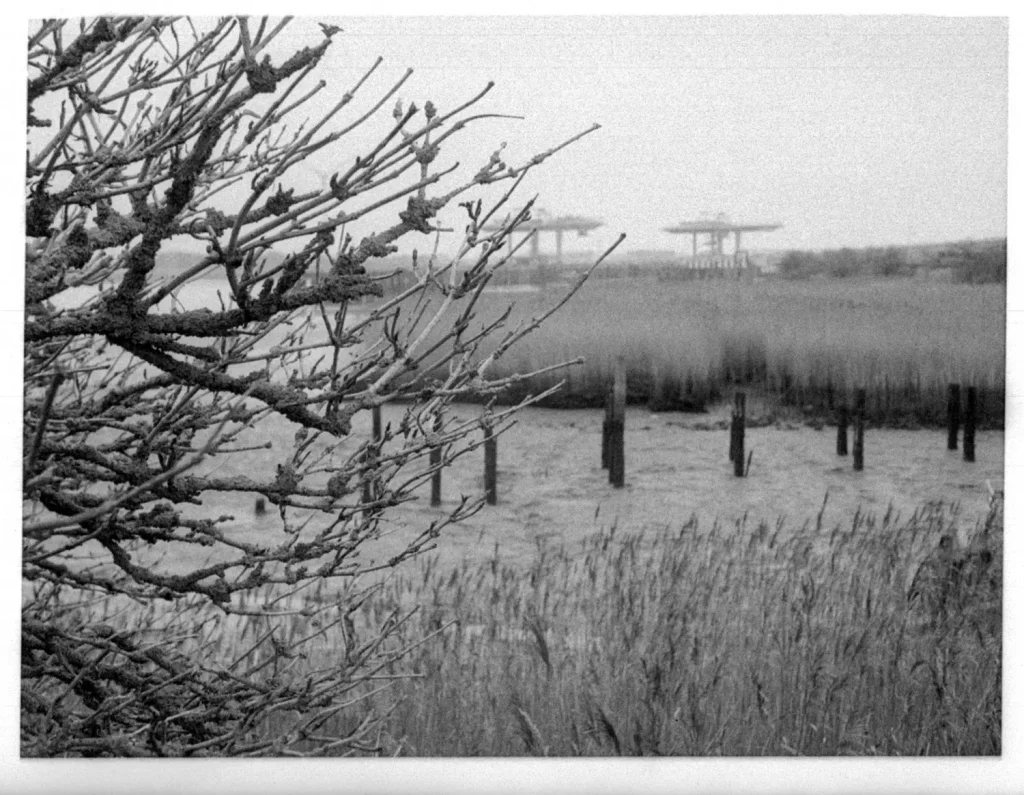
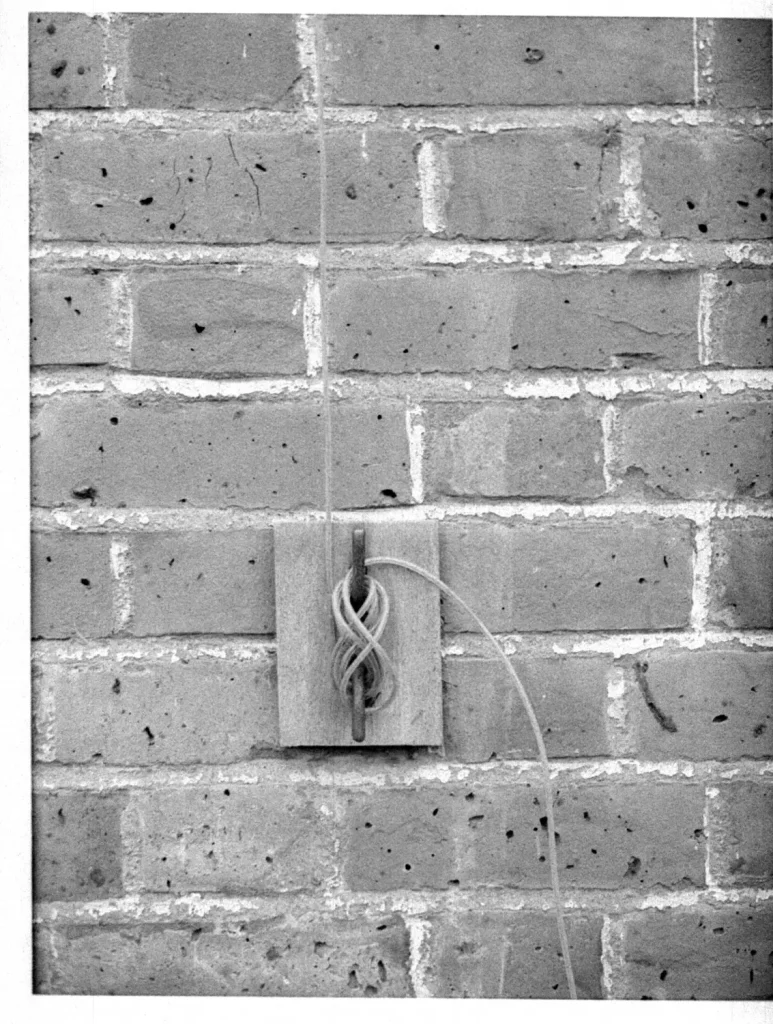
Canon 110ED Conclusions
The Canon 110ED exudes quality in finish and solidity – this can be seen from the sheer heft of the thing, but also from details like the metal inserts that line the threads for the remote release and the tripod; it combines this high level of finish with a fast lens, but it will give issues with ISO 400 film (not a problem for the updated Canon 110 ED 20).
If you would like to know more about shooting 110 films and cameras, have a read of my article on the subject here.
Share this post:
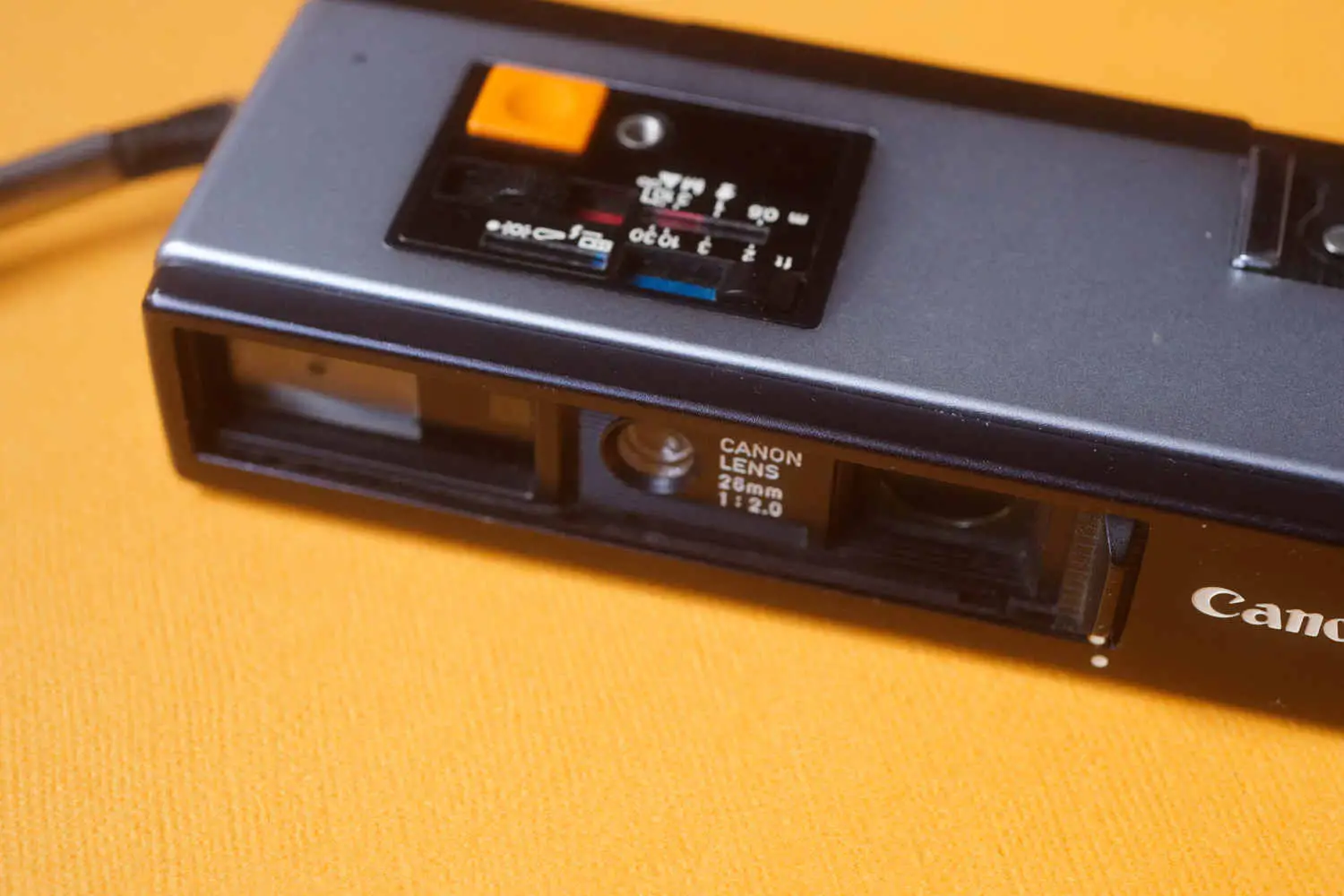








Comments
Jordi Fradera on Canon 110ED Mini-Review of a Luxury Pocket Camera – By Bob Janes
Comment posted: 19/03/2021
After a Kodak Instamatic, I think the 50 model) I had a super deluxe 110, the Rollei 110. Both cameras were very comfortable for their size and weight.
I took hundreds of photos with Kodak 110 Gold 200 and the paper copies (7x10 cm) of the time seemed fine to me but now that I have scanned the negatives I have changed my mind. I think it was a mistake not to have bought my Pentax ME before, which has given me so much joy.
Comment posted: 19/03/2021
Comment posted: 19/03/2021
Terry B on Canon 110ED Mini-Review of a Luxury Pocket Camera – By Bob Janes
Comment posted: 19/03/2021
Some years ago now, I decided that my camera collection was lacking. My sub-min collection had already been completed for my purpose, and as I had used my Mamiya 16 Automatic in the mid-1960's, I had already added to it in subsequent years an Edixa 16s, two Rolleis. the 16 and 16S, four Minoltas, a Minox, Yashica Ataron, and a second Mamiya 16 Auto when I learnt that there was a second model, identical in looks, but which was in meters, not feet as my original, and was minus the 1/2 second shutter speed.
Now the lacking element was 110 format, so I decided to remedy this with a small collection of top of the range models. This now comprises all the regulars such as the tiny Pentax slr (with all lenses except the zoom) the two Minolta slr's, the cute Rollei A110, Agfamatic 6008/5008/ makro pocket sensor models, and last to be added the Canon 110ED.
I've just got the Canon down for a further look upon reading your article. To my eyes it lacks the design fun factor of the others. It's a brick, with a bit of heft, although it is endowed with some nice features, with one I hated - the awkward positioning of the spring loaded push required to advance the film. Nice feature is the 6V battery. The Agfa's follow the brick philosophy but have beautifully curved edges making them a joy to hold. The 110's top mounted standard hot shoe would be welcomed by flash users, and should permit most auto flashguns to be synched, as I understand that the f stops of little weather signal aperture settings are known.
Comment posted: 19/03/2021
Dave Powell on Canon 110ED Mini-Review of a Luxury Pocket Camera – By Bob Janes
Comment posted: 19/03/2021
Comment posted: 19/03/2021
Comment posted: 19/03/2021
Comment posted: 19/03/2021
Comment posted: 19/03/2021
Huss on Canon 110ED Mini-Review of a Luxury Pocket Camera – By Bob Janes
Comment posted: 19/03/2021
You have to try the Rollei A110. Tiny and superb.
https://www.flickr.com/gp/39133227@N08/6q73C3
Comment posted: 19/03/2021
Comment posted: 19/03/2021
Comment posted: 19/03/2021
Rock on Canon 110ED Mini-Review of a Luxury Pocket Camera – By Bob Janes
Comment posted: 20/03/2021
Comment posted: 20/03/2021
Comment posted: 20/03/2021
Comment posted: 20/03/2021
Comment posted: 20/03/2021
Rock on Canon 110ED Mini-Review of a Luxury Pocket Camera – By Bob Janes
Comment posted: 20/03/2021